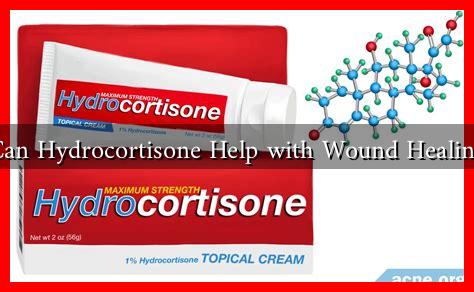-
Table of Contents
Can Hydrocortisone Help with Wound Healing?
Wound healing is a complex biological process that involves a series of stages, including hemostasis, inflammation, proliferation, and remodeling. Various factors can influence this process, including the type of wound, the patient’s overall health, and the treatments applied. One treatment that has garnered attention is hydrocortisone, a corticosteroid known for its anti-inflammatory properties. This article explores the role of hydrocortisone in wound healing, examining its benefits, potential drawbacks, and the latest research findings.
Understanding Hydrocortisone
Hydrocortisone is a synthetic form of cortisol, a hormone produced by the adrenal glands. It is commonly used to treat a variety of conditions, including allergies, skin disorders, and inflammatory diseases. Hydrocortisone works by suppressing the immune response and reducing inflammation, which can be beneficial in certain medical situations.
The Role of Inflammation in Wound Healing
Inflammation is a natural part of the wound healing process. It helps to prevent infection and prepares the tissue for repair. However, excessive inflammation can hinder healing and lead to chronic wounds. This is where hydrocortisone may play a role:
- Reducing Excessive Inflammation: By dampening the inflammatory response, hydrocortisone can help manage conditions where inflammation is excessive, potentially leading to improved healing outcomes.
- Promoting Faster Recovery: In some cases, reducing inflammation can lead to a quicker transition from the inflammatory phase to the proliferative phase of healing.
Research Findings on Hydrocortisone and Wound Healing
Several studies have investigated the effects of hydrocortisone on wound healing, with mixed results. Here are some key findings:
- Animal Studies: Research conducted on animal models has shown that hydrocortisone can enhance wound healing in certain types of wounds, particularly those associated with inflammation.
- Human Studies: A study published in the Journal of Investigative Dermatology found that low-dose hydrocortisone applied topically improved healing in patients with chronic wounds.
- Potential Risks: Conversely, other studies suggest that prolonged use of hydrocortisone may impair wound healing by suppressing the immune response too much, leading to increased risk of infection.
Case Studies and Clinical Applications
In clinical practice, hydrocortisone is often used in conjunction with other treatments for wound care. For example:
- Chronic Ulcers: In patients with diabetic foot ulcers, hydrocortisone has been used to manage inflammation and promote healing, often alongside debridement and infection control measures.
- Burn Treatment: In burn patients, hydrocortisone may be applied to reduce inflammation and pain, potentially speeding up the healing process.
Considerations and Recommendations
While hydrocortisone can be beneficial in certain contexts, it is essential to use it judiciously. Here are some recommendations:
- Consult a Healthcare Professional: Always seek medical advice before using hydrocortisone for wound healing, especially for chronic or severe wounds.
- Monitor for Side Effects: Be aware of potential side effects, including skin thinning and increased susceptibility to infections.
- Combine with Other Treatments: Consider using hydrocortisone as part of a comprehensive wound care plan that includes proper cleaning, dressing, and possibly antibiotics.
Conclusion
Hydrocortisone can play a role in wound healing, particularly in managing excessive inflammation and promoting recovery in specific cases. However, its use must be carefully considered, as it can also pose risks if misapplied. Ongoing research continues to shed light on the optimal use of hydrocortisone in wound care, emphasizing the importance of individualized treatment plans. As with any medical treatment, consulting with a healthcare professional is crucial to ensure the best outcomes for wound healing.


